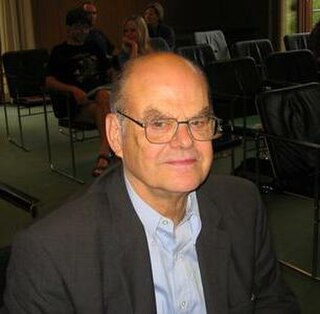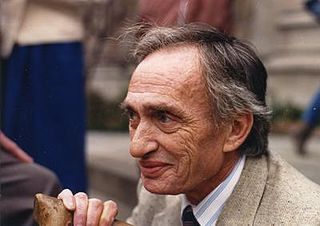
In mathematics, the classification of the finite simple groups is a result of group theory stating that every finite simple group is either cyclic, or alternating, or it belongs to a broad infinite class called the groups of Lie type, or else it is one of twenty-six or twenty-seven exceptions, called sporadic. The proof consists of tens of thousands of pages in several hundred journal articles written by about 100 authors, published mostly between 1955 and 2004.

In the area of abstract algebra known as group theory, the monster group M (also known as the Fischer–Griess monster, or the friendly giant) is the largest sporadic simple group, having order
246 · 320 · 59 · 76 · 112 · 133 · 17 · 19 · 23 · 29 · 31 · 41 · 47 · 59 · 71
= 808,017,424,794,512,875,886,459,904,961,710,757,005,754,368,000,000,000
≈ 8×1053.

In mathematics, a sporadic group is one of the 26 exceptional groups found in the classification of finite simple groups.

In the area of modern algebra known as group theory, the Conway groups are the three sporadic simple groups Co1, Co2 and Co3 along with the related finite group Co0 introduced by (Conway 1968, 1969).

Richard Dagobert Brauer was a leading German and American mathematician. He worked mainly in abstract algebra, but made important contributions to number theory. He was the founder of modular representation theory.

John Griggs Thompson is an American mathematician at the University of Florida noted for his work in the field of finite groups. He was awarded the Fields Medal in 1970, the Wolf Prize in 1992, and the Abel Prize in 2008.

In the area of modern algebra known as group theory, the Held groupHe is a sporadic simple group of order
In mathematics, the Feit–Thompson theorem, or odd order theorem, states that every finite group of odd order is solvable. It was proved by Walter Feit and John Griggs Thompson.
Zvonimir Janko (26 July 1932 – 12 April 2022) was a Croatian mathematician who was the eponym of the Janko groups, sporadic simple groups in group theory. The first few sporadic simple groups were discovered by Émile Léonard Mathieu, which were then called the Mathieu groups. It was after 90 years of the discovery of the last Mathieu group that Zvonimir Janko constructed a new sporadic simple group in 1964. In his honour, this group is now called J1. This discovery launched the modern theory of sporadic groups and it was an important milestone in the classification of finite simple groups.

Israel Nathan Herstein was a mathematician, appointed as professor at the University of Chicago in 1951. He worked on a variety of areas of algebra, including ring theory, with over 100 research papers and over a dozen books.

Gopal Prasad is an Indian-American mathematician. His research interests span the fields of Lie groups, their discrete subgroups, algebraic groups, arithmetic groups, geometry of locally symmetric spaces, and representation theory of reductive p-adic groups.

Aner Shalev is a professor at the Einstein Institute of Mathematics at the Hebrew University of Jerusalem, and a writer.
In mathematical group theory, a C-group is a group such that the centralizer of any involution has a normal Sylow 2-subgroup. They include as special cases CIT-groups where the centralizer of any involution is a 2-group, and TI-groups where any Sylow 2-subgroups have trivial intersection.
In mathematical finite group theory, the Brauer–Fowler theorem, proved by Brauer & Fowler (1955), states that if a group G has even order g > 2 then it has a proper subgroup of order greater than g1/3. The technique of the proof is to count involutions in G. Perhaps more important is another result that the authors derive from the same count of involutions, namely that up to isomorphism there are only a finite number of finite simple groups with a given centralizer of an involution. This suggested that finite simple groups could be classified by studying their centralizers of involutions, and it led to the discovery of several sporadic groups. Later it motivated a part of the classification of finite simple groups.
In mathematical finite group theory, the Thompson order formula, introduced by John Griggs Thompson, gives a formula for the order of a finite group in terms of the centralizers of involutions, extending the results of Brauer & Fowler (1955).
In mathematical finite group theory, a group of GF(2)-type is a group with an involution centralizer whose generalized Fitting subgroup is a group of symplectic type.

Aleksandr Sergeyevich Merkurjev is a Russian-American mathematician, who has made major contributions to the field of algebra. Currently Merkurjev is a professor at the University of California, Los Angeles.

In the area of modern algebra known as group theory, the Conway groupCo2 is a sporadic simple group of order

In the area of modern algebra known as group theory, the Conway groupCo1 is a sporadic simple group of order
Edwin Earl Floyd was an American mathematician, specializing in topology.







